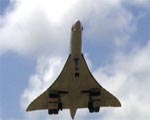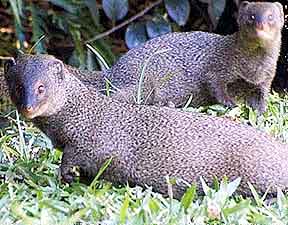|
Fun Facts and things you might not know about Barbados |
|
Barbados produced the worlds oldest rum under the
Mount Gay label |
 |
 |
The furry little creatures that run out in
front of your hire car as you travel the country roads of Barbados are mongooses. |
Did you also know that BARBADOS.......
The first settlement in Barbados, Holetown, was originally named Jamestown, after it's benefactor, King James I of England. It acquired the name "Holetown" due to the off loading and cleaning of ships in the very small channel located within the immediate vicinity of the town. These tasks left the area in an untidy and smelly condition....thus the Jamestown area became referred to as "the Hole", which evolved into "Holetown", as it known today. (This channel is no longer in use for such purposes). Commander-in-Chief from 21 December 1629 to 16 July 1630, Sir William Tufton, was executed by firing squad in May 1632, for high treason. One of the Judges in Sir William Tufton's case, Captain William Kitterich, was executed by firing squad for the murder of a Captain William Birch. The Capital city, Bridgetown was originally named "Indian Bridge" for the rude bridge which had been constructed over the river (now known as the Careenage) by the Indians. It was later called the "town of St. Michael" in official documents, before finally being named Bridgetown when a new bridge was built in place of the Indian Bridge, sometime after 1654. Most of what is now the Southern part of Bridgetown (the lower Bay Street environs) was once a huge swamp.
It was written of the great Hurricane of 16 October 1780 "Whites and Blacks together, it is imagined (the deaths) to exceed some thousands, but fortunately few people of consequence were among the number". In 1736 boasted 22 Forts and 26 Batteries, mounting a total of 463 Cannon, along it's 21 miles of Western shoreline. During the terrible landslip of 11 October 1786, a home in the area of Walcotts Plantation, in that part of the Parish of St. Joseph called Crab-Hole, in which a Christening was to take place, sank entirely underground. "The next morning no vestige of it was to be seen. Some time afterwards, it was discovered through a fissure in the soil, which was enlarged, an opening made in the roof, and to the great astonishment of the persons who descended into it, the internal arrangements were found in the same order as before the accident took place; even the christening Cake was found unimpaired in appearance and taste." During this same landslip of 1786, several buildings on the Walcott estate were swallowed up, including the windmill, "which was carried some hundred yards from it's original location and swallowed up, no part remaining visible but the extremity of the upper arm".
During the period 1841 - 1845, Barbados was considered the healthiest place in the world to live, having 1 death per 66 people, compared to world averages of approximately 1 death per 35 people. People, in times past, travelled from all over the world to Barbados for it's Healing Qualities. These were to be immersed totally, with the exception of the head, in the sands of the beaches of Cattlewash in St. Andrew. This treatment was believed to cure many ills. This practice lasted for some years before waning. In 1846, Barbados had 491 active Sugar Plantations, with 506 windmills. South Carolina, in the USA, was originally settled by Barbadians, and it's first Governor was a Barbadian
Bill Clinton is not the first American President to visit Barbados. President Reagan also visited here and George Washington stayed here for six weeks, visiting in 1751 to accompany his half-brother Lawrence who had made the six week voyage from the Potomac for health reasons. Nineteen at the time, it was Washington's only trip abroad. "Hired from Captain Crofton his house for fifteen pounds ($75.00) a month exclusive of liquors and washing which we are to provide", wrote Washington in his diary shortly after landing on the island, adding: "We stand a mile from town and the view is extensive by land and pleasant by sea as we command the view of Carlisle Bay and all the shipping and such manner that none can come or go without being open to our view". The house still stands and can be found on the side of the historic Garrison Savannah which was formerly the parade ground for West Indies Regiments stationed here in the 17th and 18th centuries. Today it has been converted into offices but is easily identified by the ruin of the Coralstone sugar windmill in the parking lot. Did Washington enjoy his visit to Barbados? His words say it all .... "In the cool of the evening we rode in the country and were perfectly enraptured with the beautiful scenery which every side presented our view. The fields of cane, corn, fruit trees in a delightful green.." The American Declaration of Independence has a familiar ring to Barbadians as it is a direct crib of the Barbadian Declaration of Independence drafted 150 years earlier when the island tried to gain its own Independence (they had to wait until 1966 for this to happen). Much discussion took place between the founding fathers and Barbadians over this matter. How did they know about it? One reason might have been because one of the signatories was a Bajan, as was the printer. |
|
Activities
Barbados
Beaches
Calendar
Diving
Ecology
Exploring
Fun Facts
Geography
History
Home
Hotels
MDDM
Restaurants
& Nightlife
Tourism
Transport |